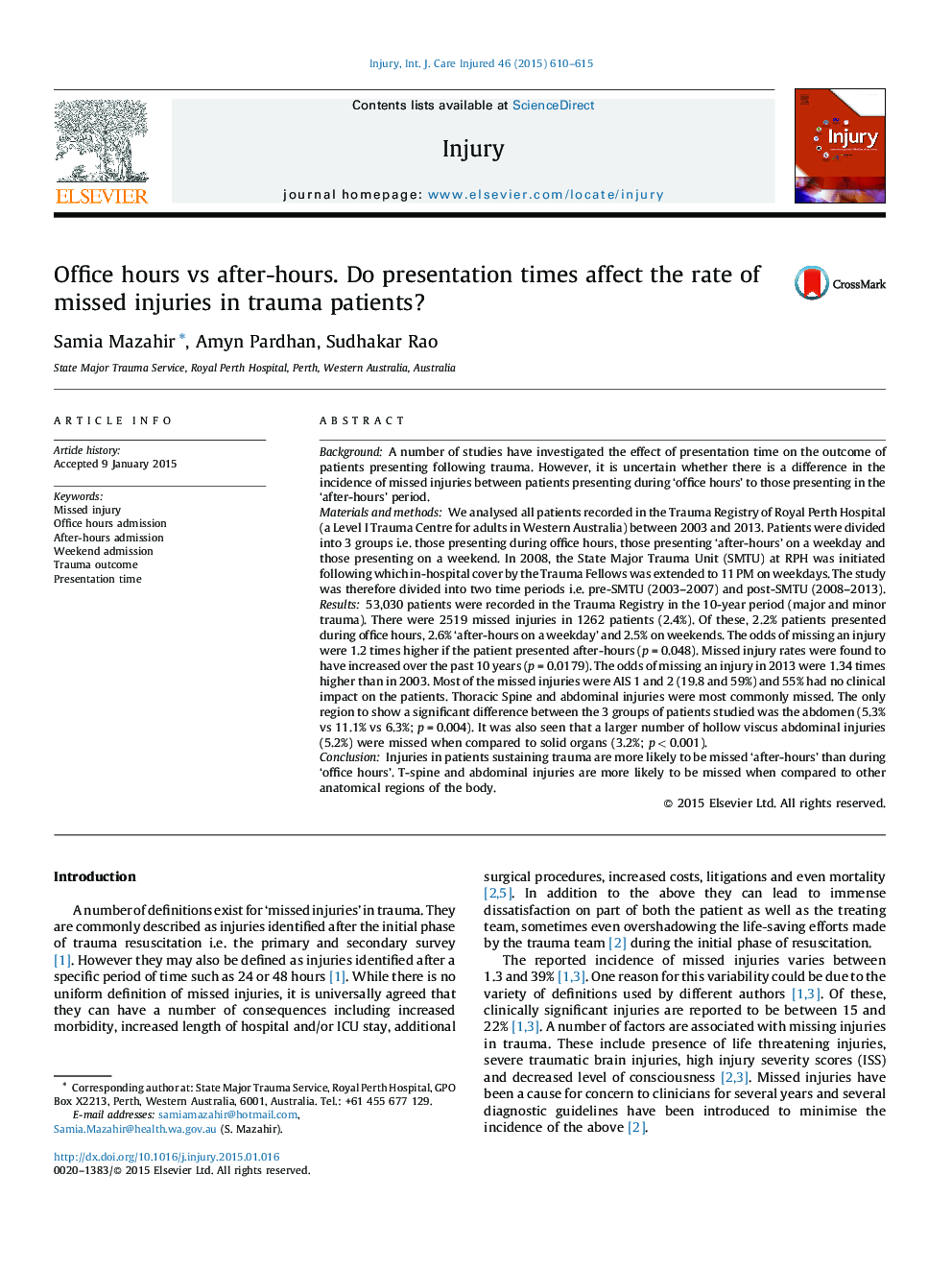| کد مقاله | کد نشریه | سال انتشار | مقاله انگلیسی | نسخه تمام متن |
|---|---|---|---|---|
| 3239053 | 1205981 | 2015 | 6 صفحه PDF | دانلود رایگان |
BackgroundA number of studies have investigated the effect of presentation time on the outcome of patients presenting following trauma. However, it is uncertain whether there is a difference in the incidence of missed injuries between patients presenting during ‘office hours’ to those presenting in the ‘after-hours’ period.Materials and methodsWe analysed all patients recorded in the Trauma Registry of Royal Perth Hospital (a Level I Trauma Centre for adults in Western Australia) between 2003 and 2013. Patients were divided into 3 groups i.e. those presenting during office hours, those presenting ‘after-hours’ on a weekday and those presenting on a weekend. In 2008, the State Major Trauma Unit (SMTU) at RPH was initiated following which in-hospital cover by the Trauma Fellows was extended to 11 PM on weekdays. The study was therefore divided into two time periods i.e. pre-SMTU (2003–2007) and post-SMTU (2008–2013).Results53,030 patients were recorded in the Trauma Registry in the 10-year period (major and minor trauma). There were 2519 missed injuries in 1262 patients (2.4%). Of these, 2.2% patients presented during office hours, 2.6% ‘after-hours on a weekday’ and 2.5% on weekends. The odds of missing an injury were 1.2 times higher if the patient presented after-hours (p = 0.048). Missed injury rates were found to have increased over the past 10 years (p = 0.0179). The odds of missing an injury in 2013 were 1.34 times higher than in 2003. Most of the missed injuries were AIS 1 and 2 (19.8 and 59%) and 55% had no clinical impact on the patients. Thoracic Spine and abdominal injuries were most commonly missed. The only region to show a significant difference between the 3 groups of patients studied was the abdomen (5.3% vs 11.1% vs 6.3%; p = 0.004). It was also seen that a larger number of hollow viscus abdominal injuries (5.2%) were missed when compared to solid organs (3.2%; p < 0.001).ConclusionInjuries in patients sustaining trauma are more likely to be missed ‘after-hours’ than during ‘office hours’. T-spine and abdominal injuries are more likely to be missed when compared to other anatomical regions of the body.
Journal: Injury - Volume 46, Issue 4, April 2015, Pages 610–615
